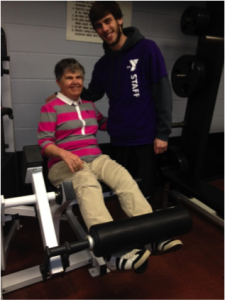Easy Approaches to Safety and Injury Prevention
 Falls are a large cause of traumatic brain injuries and physical disabilities in the US and can happen to anyone at any age. We should strive to make sure that the environments we are working and residing in are safe for ourselves, as well as the ones we care for, and that we are taking the necessary precautions to prevent abuse of prescribed medicines, alcohol and daily mishaps.
Falls are a large cause of traumatic brain injuries and physical disabilities in the US and can happen to anyone at any age. We should strive to make sure that the environments we are working and residing in are safe for ourselves, as well as the ones we care for, and that we are taking the necessary precautions to prevent abuse of prescribed medicines, alcohol and daily mishaps.
One of the biggest safety issues is preventing falls. While some falls are inevitable and can’t be controlled we can do our best to ensure the area around us is as safe as possible to prevent the ones that we can. Some individuals with disabilities are already at a higher risk of falling due to mobility issues that can make getting around already a daily struggle for them. Small changes in your home, such as adding a railing on stairways or a handle bar in the bathroom/shower, can make a big difference. Most often these small things are simple to overlook daily, but very easy to correct. Another easy change is to make sure that there is plenty of area between furniture and tables so that individuals with walking aids will have plenty of room to pass by without hitting items around them. Remove area rugs or make sure that they are secured tightly to the floor with double sided tape or non-slip grips underneath.
Each room in your house should have proper lighting and light switches and lamps should be easy to get to when entering a room. Making sure the individual you care for receives regular check-ups to maintain their vision is also helpful, so that they can clearly see the environment around them. Blurry vision can cause dizziness or make them lightheaded which could contribute to losing their balance and tripping. Staying physically active will also help build bone density and muscle to make individuals stronger and increase coordination and balance, so that they are able to support themselves more and reduce injuries.
It is important to prevent the abuse of prescription drugs. Individuals with an intellectual disability may not intentionally misuse their drugs, but unknowingly forget to take their medicine, take too much of it, or not be aware and combine it with something else that could be potentially harmful. This is why it is necessary for individuals to learn and be aware of what medicines they are taking, potential side effects, and things to stay away from when on certain medications (such as alcohol, other prescription drugs, etc.). A pill container that has the days of the week on it is a great idea to use to distribute what pills are taken at what time of the day. They also serve as a good indicator of whether the medicine has been taken that day in case the individual forgets. This will reduce the risks associated with taking too much/too little of the prescribed medicine. Providing individuals with disabilities with this knowledge will help them understand the importance of each medication and the amounts that they take.
Future injuries and accidents can be prevented by ensuring that the environment around you is safe and the ones you care for are empowered with the knowledge of potentially harmful situations. In the case that something does happen make sure there are emergency numbers near all phones for 911, poison control and the fire department. Watch The Arc’s HealthMeet webinar to learn more about how to prevent and improve emergency care for when accidents do happen.









